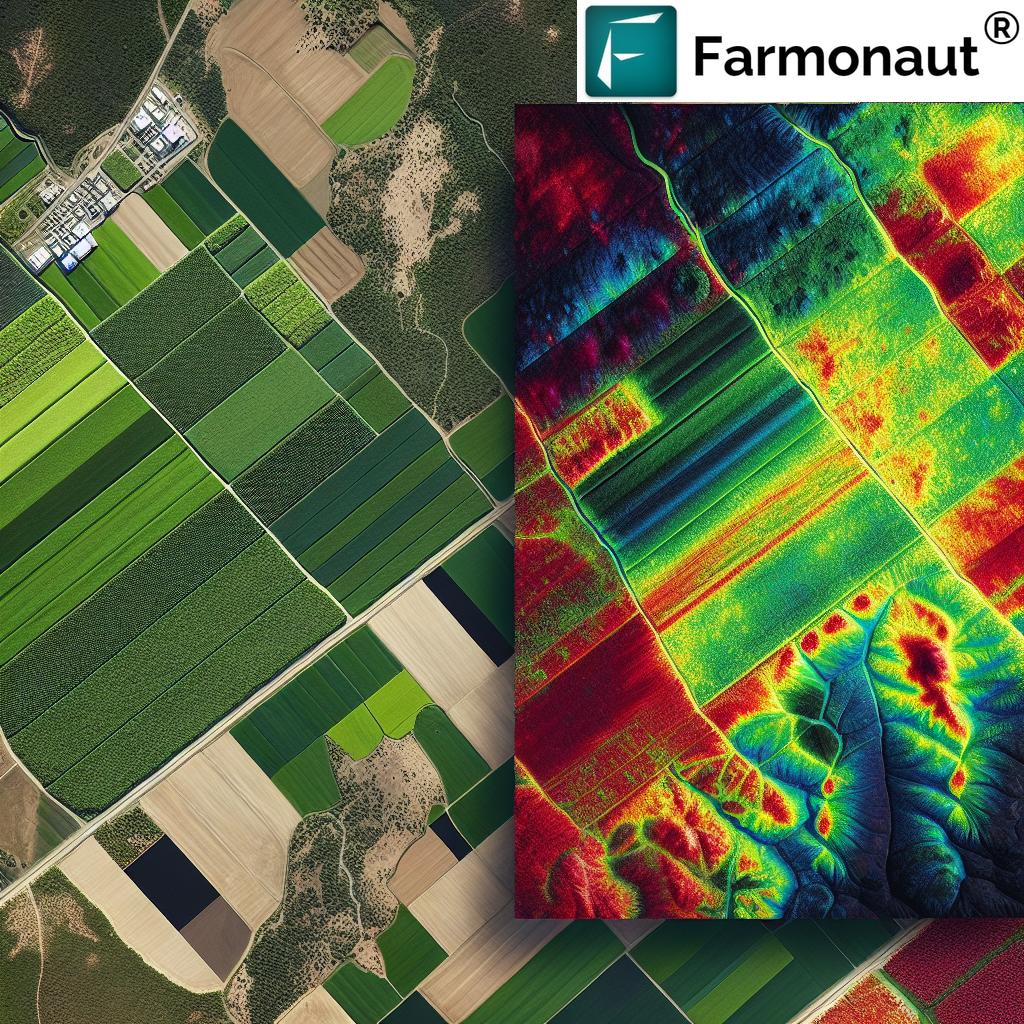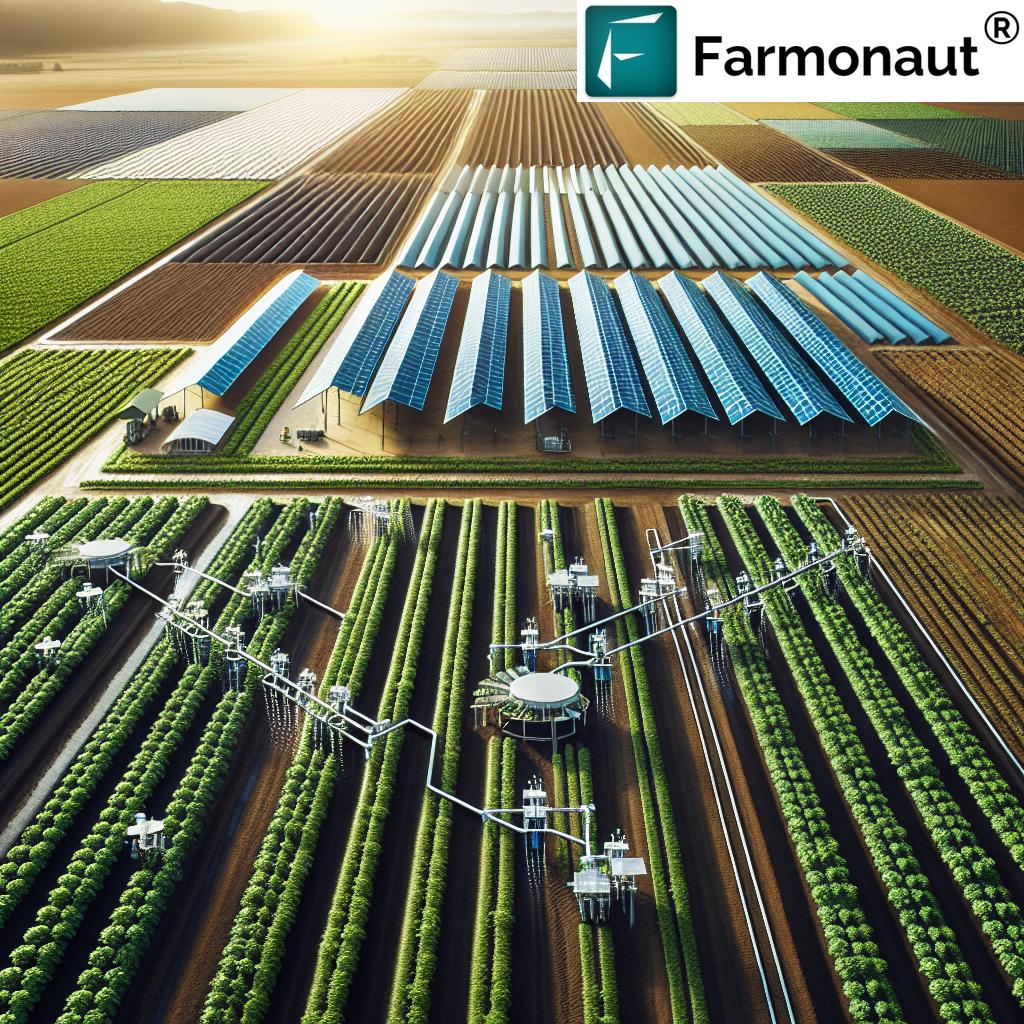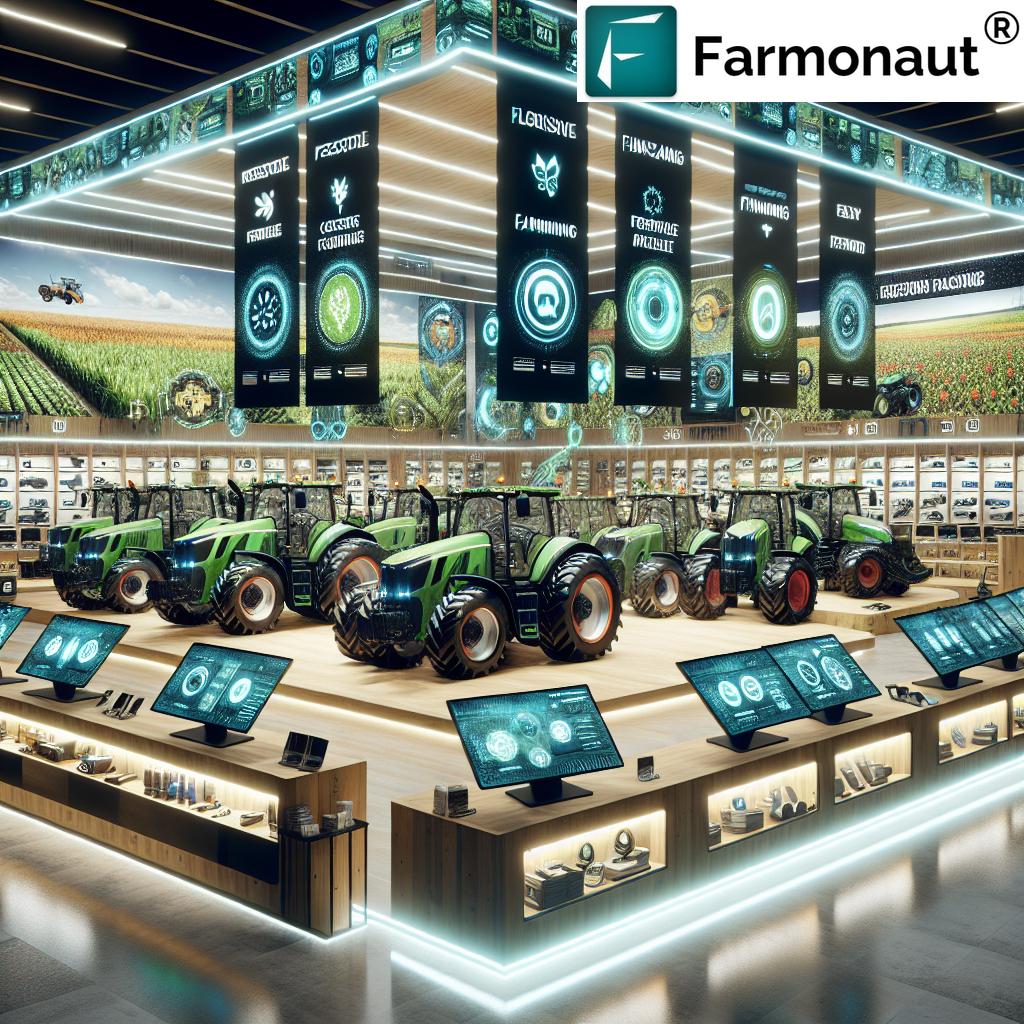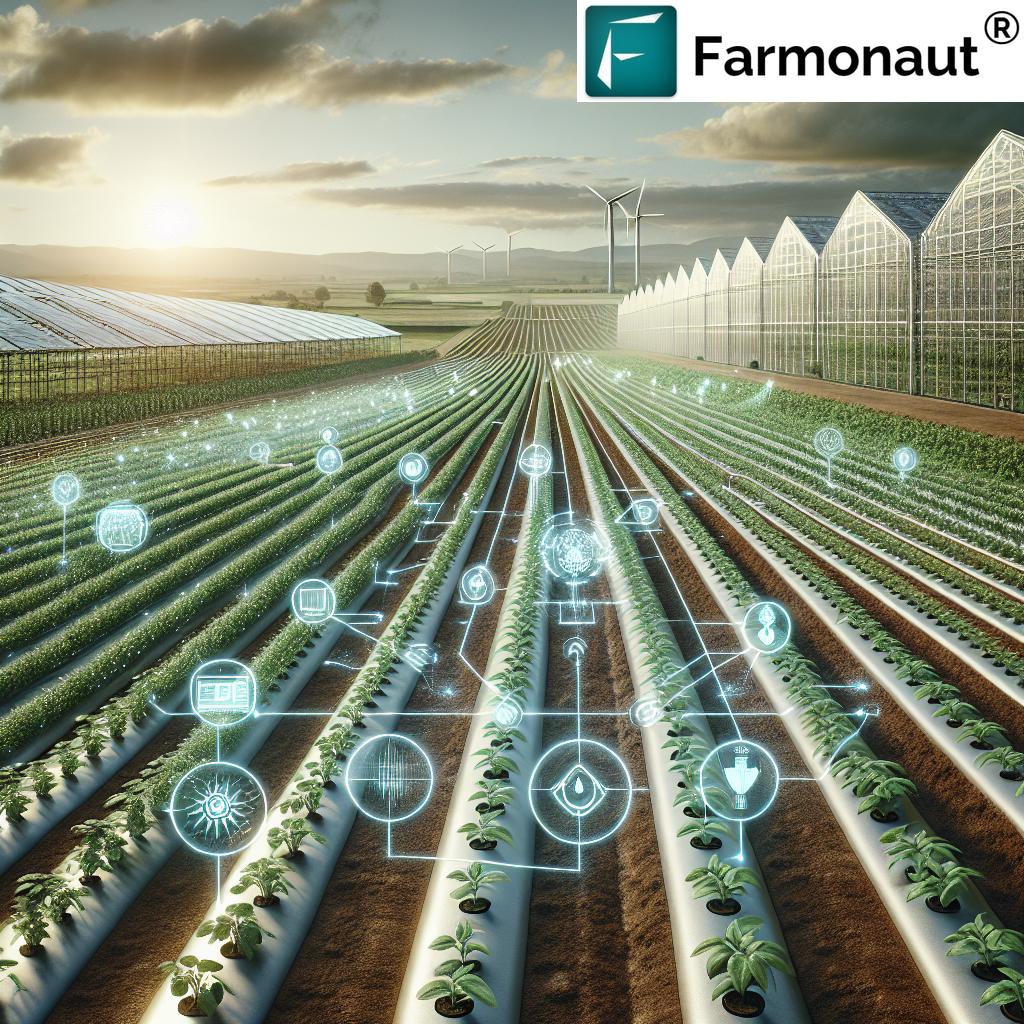Crop Model Advances 2025 for Sustainable Farming
Crop Models: Transforming Agriculture for a Sustainable Future in 2025
“By 2025, AI-powered crop models are projected to analyze 10+ billion farm data points for sustainable yield optimization.”
Table of Contents
- Understanding Crop Models in 2025
- How Crop Models Are Revolutionizing Agriculture
- Key Technological Advances in Crop Modeling (2025)
- Comparative Trend-Impact Table: Crop Model Technology in 2025
- Real-Time Farm Management with Crop Models
- Integrating AI, Big Data & IoT for Precision Crop Management
- Future Challenges and Opportunities in Crop Modeling
- Crop Modeling and Sustainability in the Global Food System
- Farmonaut Satellite Technology: Enabling Advanced Crop Modeling
- FAQ: Crop Model Advances 2025
- Conclusion: Crop Model Advances 2025
Understanding Crop Models in 2025
Crop modeling has rapidly become an indispensable tool in modern agriculture, particularly as we step into 2025—a time defined by both exciting technological advances and urgent need for sustainability. But what makes a crop model so pivotal, and how does it shape farming at global, regional, and farm levels?
At its core, a crop model is a mathematical representation of crop growth and development. Built upon decades of agronomic science and now supercharged with AI, IoT, and big data, these models simulate the physiological processes of crops—like photosynthesis, transpiration, and nutrient uptake—under varying environmental conditions, management practices, and genetic traits.
This simulation allows replicating how crops react to diverse conditions (soil moisture, temperature, solar radiation, CO2, and more), enabling highly accurate predictions about outcomes like yield, resource needs, and production risks under different scenarios.
- Tool for sustainability: Crop models enable the farming sector to maximize productivity while minimizing resource use, input costs, and environmental impacts.
- Pivotal role for adaptation: As climate change intensifies and resource limitations are posed, crop modeling helps in quick evaluation and response to uncertainties.
- From academic to practical: Thanks to recent advancements in computational power and data availability, crop models are now widely used from the lab to the field, shaping actionable solutions.
In 2025, the very definition of crop modeling has evolved to include not only simulation but also real-time feedback from sensors, integration with remote monitoring, and optimization based on vast, dynamic datasets.
How Crop Models Are Revolutionizing Agriculture
The impact of crop models across agriculture—from farm to national and global levels—is profound. Let’s explore how crop model applications are transforming our approach to sustainable farming in 2025:
- Precision Farming & Digital Decision-Making: By integrating crop models with remote sensing, drones, IoT sensors, and weather stations, we achieve precision management—making informed choices on irrigation schedules, fertilization rates, and planting dates based on field-level forecasts.
- Yield Optimization: Modeling scenarios allow farmers to optimize yields while also reducing input costs and impacts, supporting both productivity and sustainability.
- Climate Change Risk & Adaptation: With increased variability in climate, crop models assess vulnerability of different systems and inform strategies—like shifting cropping zones, introducing new cultivars, or altering calendars.
- Accelerated Breeding & Genetic Improvement: Innovations like linking models with genomic data enable scientists to predict how new varieties will perform—reducing costs and shortening breeding cycles for climate-resilient cultivars.
- Food Security & Early Warnings: Governments and agribusinesses use crop modeling for yield forecasting, identifying potential food shortages, optimizing resource allocation, and improving food security frameworks.
In summary: Crop model advances in 2025 enable us to simulate outcomes, evaluate risks and adaptation strategies, and implement best practices for regional and global agricultural sustainability.
For enhanced transparency in supply chains and crop traceability, explore our Blockchain-Based Product Traceability Solutions. You can track product origins, monitor every stage, and ensure security in agriculture and related sectors with Farmonaut.
Key Technological Advances in Crop Modeling (2025)
The future of crop modeling is being written with every byte of data collected, every AI algorithm optimized, and every sensor deployed into the field. In 2025, several transformative technological trends are shaping agriculture, optimizing yield, efficiency, and sustainability.
- AI & Machine Learning Integration: Modern crop models increasingly leverage AI to process vast, complex datasets, identifying subtle patterns that refine predictions, anomaly detection, resource allocation, and parameter tuning.
- Internet of Things (IoT) Deployment: Sensor innovation supplies crop models with real-time, high-resolution environmental, soil, and crop health data. This enables dynamic recalibration and unmatched model accuracy at various scales.
-
Big Data Analytics & Cloud Computing: Handling and analyzing the sheer data volume from drones, satellites, and sensors at regional or even global scales, Big Data Analytics is pivotal for multi-factor predictive scenarios.
This facilitates early-warning systems—crucial for food security and climate resilience. - User-Friendly Mobile Platforms & Apps: Mobile apps and portals (like Farmonaut’s platform) provide actionable insights from crop models directly to farmers and advisors, democratizing access regardless of technical background.
-
Remote Sensing from Satellites and Drones: Cutting-edge, multi-spectral satellite imagery makes continuous, real-time field monitoring possible, mapping crop variability at every growth stage.
Access Farmonaut’s Agro-Admin App to monitor large-scale farms effortlessly.
“Nearly 60% of global crop management decisions will rely on integrated AI and big data analytics by 2025.”
Together, these advances unlock sustainable growth, efficient resource use, and informed adaptation—driving agriculture toward a resilient future.
Comparative Trend-Impact Table: Crop Model Technology in 2025
| Technological Trend | Description | Estimated Adoption Rate by 2025 (%) | Estimated Yield Improvement (%) | Sustainability Benefit |
|---|---|---|---|---|
| AI Integration | Utilizes machine learning & deep learning to refine crop model simulations and support real-time decision-making | 72% | +23% | Water use reduction (up to 19%), improved nutrient efficiency |
| IoT Deployment | Connects soil, weather, and crop sensors for continuous multi-scale data streaming to models | 65% | +16% | Carbon footprint reduction (8 tons CO2/ha), resource optimization |
| Big Data Analytics | Processes and analyzes high-velocity, high-volume farm and environmental datasets from multiple sources | 61% | +20% | Significant reduction in fertilizer leaching and waste |
| Mobile Apps & User Platforms | Provides actionable model insights to farmers via smartphones or tablets for rapid, location-specific decisions | 78% | +14% | Decreased pesticide use (up to 13%), empowers smallholders |
| Satellite & Drone Remote Sensing | Utilizes high-resolution multispectral imagery to monitor crop health, detect stress, and update models continuously | 69% | +21% | Both water & carbon footprint savings (estimated 12% joint reduction) |
Are you a developer or enterprise looking to integrate satellite-powered crop and environmental data into your digital systems? Try Farmonaut’s Satellite Data & Weather API. Visit our API Developer Documentation for more details.
Real-Time Farm Management with Crop Models
The bridge between crop model predictions and farm-level decisions is now seamless. Thanks to mobile technology and real-time analytics, farmers and managers can:
- Monitor crop health and growth phase-by-phase with satellite and drone data
- Manage irrigation, fertilization, and resource logistics by receiving actionable recommendations directly from model-based apps
- Adapt quickly to weather changes or emerging pest/disease risks based on crop model signals
- Track field variability and deploy precision agriculture at sub-field resolution for sustainability
This digital transformation enables harmonized, sustainable farming on every scale—from smallholders to regional cooperatives to global agribusinesses, optimizing both yield and ecological balance.
Looking to maximize fleet and machinery efficiency in agriculture or agribusiness? Explore Farmonaut’s Fleet and Resource Management Tools for agriculture. Track, optimize, and streamline farming operations with AI-driven, real-time monitoring.
Integrating AI, Big Data & IoT for Precision Crop Management
Precision agriculture is no longer just a buzzword—it is a daily operational reality in 2025.
- AI-powered Analytics: Models predict future outcomes—from optimal planting dates to fertilization rates—based on integrated historic, environmental, and real-time data streams.
- IoT Devices (Sensors, Weather Stations, Field Cameras): These provide constant, granular updates to crop models, which dynamically adjust their output for each part of a field.
- Big Data Integration: Crops are monitored on the fly; model parameters are recalibrated to reflect new management practices or emergent threats—improving accuracy and resilience.
- Mobile & Web Platforms: Immediate access to actionable advice for both farmers and farm managers, regardless of geographic location or farm size.
This integration leads to more resilient agriculture, producing more with less and ensuring that environmental limits are respected.
Improve access to financing and reduce risk with Farmonaut Crop Loan & Insurance Verified by Satellite Monitoring. Digitally verify assets, minimize fraud, and automate claims for agriculture and agri-finance stakeholders.
Track, manage, and report your farm’s greenhouse gas emissions transparently with Farmonaut’s Automated Carbon Footprinting Tool—supporting climate-smart farming and regulatory compliance.
Future Challenges and Opportunities in Crop Modeling
Even with cutting-edge technology, several challenges remain in 2025 and beyond. However, these hurdles also present opportunities for the next generation of modeling innovation:
- Parameter Uncertainty: Soil heterogeneity, microclimate variability, and genetic diversity create “unknowns” in models. New data sources and machine learning methods are being developed to resolve uncertainties.
- Data Quality Variability: The outputs of models rely on the accuracy and resolution of input data. Integrating high-quality sensor and satellite data through platforms like Farmonaut improves this substantially.
- Modeling Biotic Stresses: Current models struggle with rapid biotic changes (pests, disease outbreaks). The future lies in coupled bio-physical models integrating epidemiological forecasts and real-time pest monitoring.
- Multi-Stressor and Multi-Crop Integration: Complex, real-world farms grow several crops under various threats. Advanced frameworks are being built to model multiple crops and stressors together, capturing holistic system dynamics.
- Social-Economic Scenario Coupling: Next-gen crop modeling will couple with climate, economic, and social models—helping policymakers balance yield, sustainability, and livelihoods.
Ongoing research and commercialization aim to make crop models more robust, adaptive, and inclusive, with transparent calibration and continuous feedback from digital platforms.
For effortless management and monitoring of thousands of hectares, try Farmonaut’s Large-Scale Farm Management Platform. Analyze variability, streamline logistics, and implement best practices at a landscape level.
Crop Modeling and Sustainability in the Global Food System
Crop models are at the heart of a sustainable and resilient global food system in 2025. By combining scientific rigor, technological progress, and real-world data, they help us:
- Reduce environmental impacts: Optimize fertilizer, water, and chemical inputs for minimal runoff and emissions.
- Adapt to climate change: Simulate crop performance and risks across altered temperature, rainfall, and pest regimes.
- Enhance food security: Enable yield prediction and early warning systems for national and regional food balance planning.
- Promote resilience and adaptation: Model strategies for varietal replacement, staggered planting, or multi-cropping under various climate scenarios.
These sustainability benefits are directly aligned with SDGs and shape global frameworks for agriculture in a changing world.
Farmonaut Satellite Technology: Enabling Advanced Crop Modeling
At Farmonaut, we are dedicated to making advanced, satellite-driven agricultural insights accessible, affordable, and actionable for all.
Our proprietary blend of satellite imagery, AI-powered advisory (like our Jeevn AI system), blockchain traceability, and resource management empowers modern crop modeling at every scale.
- Real-Time Crop Monitoring: Users leverage multi-spectral satellite data to quantify vegetation health (NDVI), analyze soil moisture, and model stressors—supporting instant data-driven decisions, even for vast areas.
- AI-Driven Advisory: Our Jeevn AI system analyzes satellite and environmental data, delivering tailored crop management recommendations, weather forecasts, and productivity-boosting strategies.
- Blockchain Traceability: Full product traceability verifies every transaction within the crop supply chain, reducing fraud and creating trusted, sustainable farming systems. Discover more.
- Environmental Impact Tracking: Crop modeling and field analytics are connected seamlessly to environmental outcome tracking, including carbon footprint monitoring, regulatory reporting, and sustainability certifications.
We believe that easy access to actionable, high-quality data is the foundation of resilient food production and sustainable farming for the world in 2025 and beyond.
Want AI-powered insights for crop plantation, forest, and land restoration projects? Access our Crop Plantation & Forest Advisory Tools—get recommendations based on local, regional, and historical data.
Frequently Asked Questions (FAQ): Crop Model Advances 2025
-
What is a crop model and why is it crucial in 2025?
A crop model is a mathematical simulation of crop growth and yield in response to various environmental, management, and genetic factors. In 2025, with advances in AI, IoT, and satellite data, crop models are vital for sustainable food production, improving resilience to climate change, and enabling precision agriculture for all scales of farming. -
How do AI and big data improve crop modeling?
Artificial Intelligence and big data analytics rapidly process vast datasets, detect subtle trends, and allow crop models to recalibrate instantly. This leads to more accurate predictions and enables real-time response to changes in field conditions, weather, or emerging threats. -
What types of agricultural decisions can crop models guide?
Crop models can inform irrigation scheduling, fertilizer application rates, planting and harvest timings, variety selection, yield forecasting, drought risk, pest and disease threat assessments, and overall resource planning. -
How do mobile apps help farmers with crop model data?
User-friendly mobile apps (such as Farmonaut’s platform) distill complex model outputs into simple advice, notifications, and dashboards, making it easy for farmers and agronomists to act on up-to-date recommendations for any field, anywhere. -
What are the current limitations and emerging opportunities in crop modeling?
Challenges include parameter uncertainty, data quality variability, and the complexity of modeling multi-crop, multi-stressor systems. Opportunities lie in leveraging AI for robust calibration, integrating diverse data streams, building flexible frameworks, and coupling crop models with economic/socio-environmental models for holistic planning. -
How can large-scale or multi-farm operations benefit from crop models?
With cloud-based platforms and satellite technology, large and multi-farm operations can optimize logistics, monitor variability at scale, and streamline all operational decisions for higher productivity and sustainability. -
How does Farmonaut contribute to advanced crop modeling in 2025?
We provide real-time, satellite-based crop monitoring, AI-driven advisory, resource management, blockchain traceability, and environmental impact tracking—making actionable, high-quality data available to farmers, businesses, and governments worldwide.
Conclusion: Crop Model Advances 2025
Crop model advances in 2025 are more than a technological leap; they are the foundation of sustainable agriculture in a changing world. By combining AI, big data, IoT, and satellite observation, these models enable farmers and stakeholders at all levels to optimize yield, reduce resource waste, and build resilience—shaping a future where food security, productivity, and environmental stewardship go hand in hand.
The role of crop modeling extends far beyond academic exercises—today, dynamic models guide practical, day-to-day decisions on millions of farms, benefiting food systems at regional and global scales.
At Farmonaut, we continue to lead in making advanced satellite-driven data and AI-powered advisory systems accessible to all users. Our mission is to empower every farmer, business, and institution to thrive in a data-driven agricultural landscape, balancing productivity, sustainability, and transparency for now and the future.
Start your journey into satellite-powered, AI-driven sustainable farming:
TRY THE FARMONAUT PLATFORM FOR FREE
Ready to unlock the power of crop model advances for your farm or business in 2025? Download the Farmonaut App or Connect Your System via API














